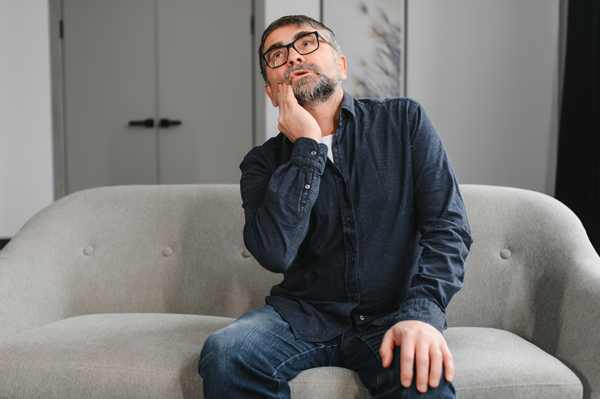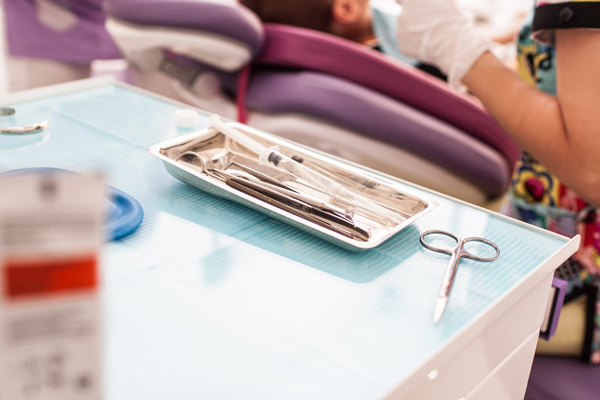What Is Pulpitis? Omaha, NE
Pulpitis is when the inner portion of the tooth becomes inflamed. It is usually reversible, but not always. A tingling sensation in a tooth or sharp pain when eating hot or cold foods could be a sign of pulpitis. An endodontist can examine the tooth and make the appropriate diagnosis.
As with most dental conditions, it is optimal to catch pulpitis early. Endodontic therapy is available at Advanced Endodontic Therapy in Omaha and the surrounding area. Call us at (402) 403-6988 to schedule an appointment to determine if you are suffering from a pulp infection.
The Two Types of Pulpitis
A tooth has many layers. Inside the innermost layer is the pulp, which contains the blood supply and nerves of the tooth. When bacteria get into the pulp, it can lead to pulpitis. This painful inflammation of the dental pulp can occur in one or multiple teeth.
The two types of pulpitis are reversible and irreversible. Reversible pulpitis is mild, and the tooth pulp can be saved. Irreversible pulpitis is just as it sounds. With irreversible pulpitis, the symptoms are more severe, and the pulp cannot be saved.
“The two types of pulpitis are reversible and irreversible.”
Pulpitis Symptoms
One of the first symptoms of pulpitis a patient notices is pain. It can be intense and throbbing or dull and achy. The pain caused by reversible pulpitis can be milder and may only happen while eating. The pain that comes with irreversible pulpitis is often more severe and can occur day or night.
The additional symptoms of reversible pulpitis include:
- Brief sensitivity to cold
- Sensitivity to sweet food and drink
- Sharp pain
- The tooth does not hurt when probed
Symptoms of irreversible pulpitis include:
- Gum swelling
- Fever
- Gum swelling
- Intense or spontaneous pain
- Longer sensitivity to cold
- Pain when a tooth gets probed
- Sensitivity to heat
When inflammation builds in the tooth, the pulp can die. Once this happens, the pain stops, and the tooth will no longer be sensitive to hot or cold. This is when infection can set in, and an abscess can form. If the patient starts to experience any of the symptoms listed, it is time to call an endodontist for an appointment.
“One of the first symptoms of pulpitis a patient notices is pain.”
Causes of Pulpitis
Several things can cause inflammation of the dental pulp. A bacterial infection is the most common cause. However, other dental conditions can increase your risk of getting pulpitis. These include:
- Gum disease can cause bone loss, which can lead to pulpitis. Gum disease can cause bone loss, which can lead to pulpitis.
- Cracked or fractured tooth: A fracture can reach into the pulp, causing inflammation and pulpitis.
- Crown, filling, or other invasive dental procedure: Pulpitis can occur after a filling, crown, or other dental work. It can get treated once the original dental work gets repaired.
- Deep cavities: Tooth decay can spread deep into the tooth and affect your dental pulp and roots
- Grinding and clenching of the teeth: Repetitive impacts like tooth grinding can cause pulpitis.
“Several things can cause inflammation to the dental pulp.”
Check out what others are saying about our dental services on Yelp: What Is Pulpitis? in Omaha, NE
Treatment Options
The endodontic therapy for a pulp infection depends on the type the patient has and what caused it. With reversible pulpitis, treating the underlying problem typically treats the pulpitis. Treatment can include removing any tooth decay and placing a filling. If the tooth is cracked, a crown can restore its function.
A root canal is the typical treatment for irreversible pulpitis. This involves cleaning out all the dead pulp in the tooth and the roots and filling it. A temporary crown will protect the tooth until the permanent one is ready. If the damage is too severe, the tooth may need to be extracted.
“The endodontic therapy for a pulp infection depends on the type the patient has and what caused it.”
Questions Answered on This Page
Q. What are the two types of pulpitis?
Q. What are the symptoms of reversible and irreversible pulpitis?
Q. What are the causes of pulpitis?
Q. What are the treatment options for pulpitis?
Q. How can I prevent pulpitis?
People Also Ask
Q. What can cause a tooth infection? What are the symptoms of a tooth infection?
Q. Why is endodontic therapy performed?
Q. What are the symptoms of a tooth infection?
Q. What is root canal treatment?
Preventing Pulpitis
The easiest way to prevent pulpitis is to practice good oral hygiene and make regular dental appointments to ensure the mouth is free from inflammation-causing bacteria. That includes brushing teeth twice a day and flossing regularly. A healthy diet that limits sugary foods and drinks can also help reduce a person's chances of suffering a pulp infection.
If a patient grinds or clenches their teeth, they should talk to the endodontist about getting a mouth guard to protect the teeth. Patients are urged to call our office as soon as they start experiencing any tooth pain or sensitivity. The earlier a dental condition is diagnosed, the sooner treatment can begin.
“The easiest way to prevent pulpitis is to practice good oral hygiene and make regular dental appointments to ensure the mouth is free from inflammation-causing bacteria.”
Frequently Asked Questions
Q. How long does reversible pulpitis last?
A. Once the dental issue causing the reversible pulpitis is treated, the pain and inflammation should stop soon. Contact our staff as soon as you feel any tooth pain. Early diagnosis is the difference between a relatively painless pulpitis treatment, a root canal, and even a tooth extraction.
Q. What are the risk factors for a pulp infection?
A. Anything that increases your risk for tooth decay can also increase your risk for pulpitis. That includes having certain medical conditions such as diabetes. Lifestyle habits, including poor oral hygiene and a diet high in sugar, also increase your risk.
Q. How is pulpitis diagnosed?
A. Pulpitis gets diagnosed through an exam. X-rays often get taken to see the extent of any decay and inflammation. A hot and cold sensitivity test and a tooth tap test can also help determine the extent of the inflammation.
Q. What is the difference between reversible and irreversible pulpitis?
A. Reversible pulpitis is milder than irreversible pulpitis and can get treated through basic restorative procedures such as a filling or a crown. Irreversible pulpitis is when the pulp cannot be saved. A root canal is necessary to restore the tooth. If the tooth can not be saved, then it must be extracted.
Q. Why is pulpitis more painful at night?
A. The main reason has to do with a person's sleeping position. More blood flows to the head while you are lying down, putting extra pressure on the tooth. The fact that there are fewer distractions might contribute to making the pain more noticeable. Propping one's head up with pillows along with some over-the-counter pain relievers should help provide some relief so you can fall asleep.
Start Feeling Better – Visit Us Today
By visiting us as soon as possible, our team can help get you the professional treatment you need. Instead of waiting around and allowing the symptoms to get worse, we can provide you with treatment options.
Definitions
Learn More About Pulpitis
Do not wait until your tooth pain gets worse before seeing our staff. The sooner pulpitis is treated, the better chance it has of being reversible. Call Advanced Endodontic Therapy at 402-403-6988 to schedule an appointment.
Helpful Related Links
- American Association of Endodontists. Endodontic Surgery. 2024
- Centers Disease Control and Prevention. Oral Health Tips. 2024
- Healthline. What You Need to Know About Your Tooth Pulp. 2024
- Mayo Clinic. Periodontitis. 2024
- Medical News Today. What to know about pulpitis. 2024
- Mouth Healthy. Root Canals. 2024
- National Library of Medicine. Dental infections. 2024
- WebMD. What Is an Abscessed Tooth? 2024
About our business and website security
- Advanced Endodontic Therapy was established in 2008.
- We accept the following payment methods: Cash, Discover, MasterCard, and Visa
- We serve patients from the following counties: Douglas County, Dodge County, Lancaster County, and Sarpy County
- We serve patients from the following cities: Omaha, Benson, Florence, Bellevue, Fort Calhoun, Papillion, Lincoln, Bennington, Plattsmouth, Fremont and Elkhorn, Missouri Valley, and Council Bluffs
- Norton Safe Web. View Details
- Trend Micro Site Safety Center. View Details
Back to top of What Is Pulpitis?










